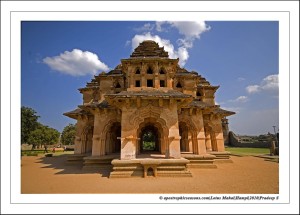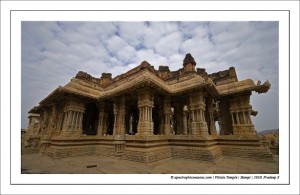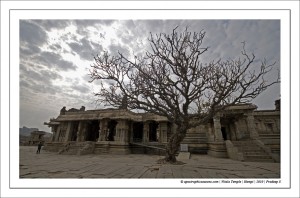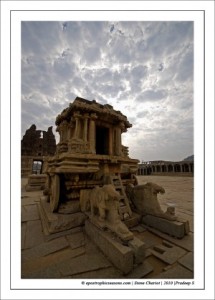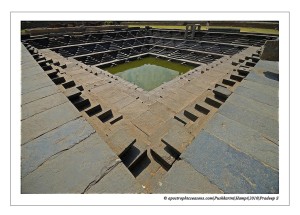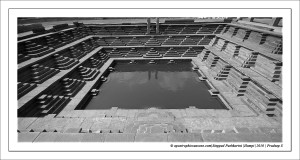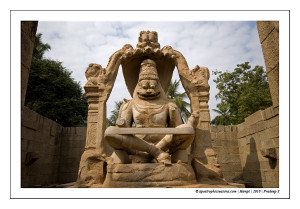Hampi, North Karnataka.
Lotus Mahal.
Brief Southern Chronicle.
Vijayanagara Empire came into prominance by 13th Century. Albeit there are several contemporary tales of who and where it originated, I happened to fathom one theory which crosses all religions. By 13th Century, the southern India was already ruled/civilized by 3 religions which existed during different time periods. Late 10th Century up till 11th, there existed Jains whose empire declined after defeat against the Cholas. There after, it was the Vaishnavas (primarily from the influence of Andhra region, the present Tirupati region) who spread the religious standard across the region. Soon after Vijayanagara empire stabilized, the so called Hindu religion set the civic standards across the entire South India.
Albeit the standard policies were religious (including Sati practice etc,), it was the much needed respite for the entire Southern plateau. Respite, because, Southern India was indeed in shambles. No consistent governance and civilian standards had kept the peace and joy at bay. Mapillas (children born to local women after a marriage with Muslim men), Hindus, Jains, Haridasas, Kanakadasas and many more constituted each and every city. Vijayanagara Empire strongly defended the Northern territorial threats and maintained the peace in Southern India for nearly 3 centuries.
Religious Harmony, one of the greatest socio-economical changes, was brought in during the Vijayanagara Empire. It comforted all religions and had due respect for every individual from every religion. The construction of Lotus Mahal is a classic example of the harmony which prevailed during that time. Lotus Mahal is a proud example set centuries ago! It hosts Hindu, Muslim and Jain architectural designs in a beautifully constructed Palace.
Vittala Temple Complex.
Vittala Temple Complex hosts temples, royal kitchens, dance platforms in a widely spread temple region. Of the lot, the Stone Chariot mesmerizes you the most. Built using big Granite blocks, it boasts of every mechanical element which a normal working wooden or metal chariot must have. The carvings on the wheel, body, roof are carved to perfection with floral, battle field soldiers, king darbar etc. Two small elephants are positioned in front of the Chariot appear to be pulling the chariot forward. A stone ladder paves way up to the Chariot mantap.
Of the others, the prime temple being the Vittala temple is far more damaged than other temples. The temple hosts the Saptaswara pillars which generate the Saptaswara on tapping them in a methodical way. A lot of work is under progress to save the temple from further breakdown.
Stepped Kalyani.
Stepped Kalyani is one of the great designs during the Vijayanagara Empire. There exists [yes, even now!] the channel, the water supply chain, which was used to supply water from the Tungabhadra River to places like Stepped Kalyani, Queen’s bath, Aanegundi, etc.
Ugra Narasimha.
A single rock!, a single granite rock was carved out into what you see in the picture. Ugra Narasimha, an avatar of Lord Narasimha Vishnu. This was carved during the Krishnadevaraya period in 15th Century. Statue depicts the anger and tempestous expression of Vishnu with Goddess Laxmi sitting on his lap. Ugra Narasimha is half man and half lion incarnation of Lord Vishnu. The statue is carved as Ugra Narasimha is sitting on Nagarahavu, Shesha Naga heading cover to Ugra Narasimha. It is believed that the statue has been damaged and the Lakshmi on the lap has been destroyed by attacks.
